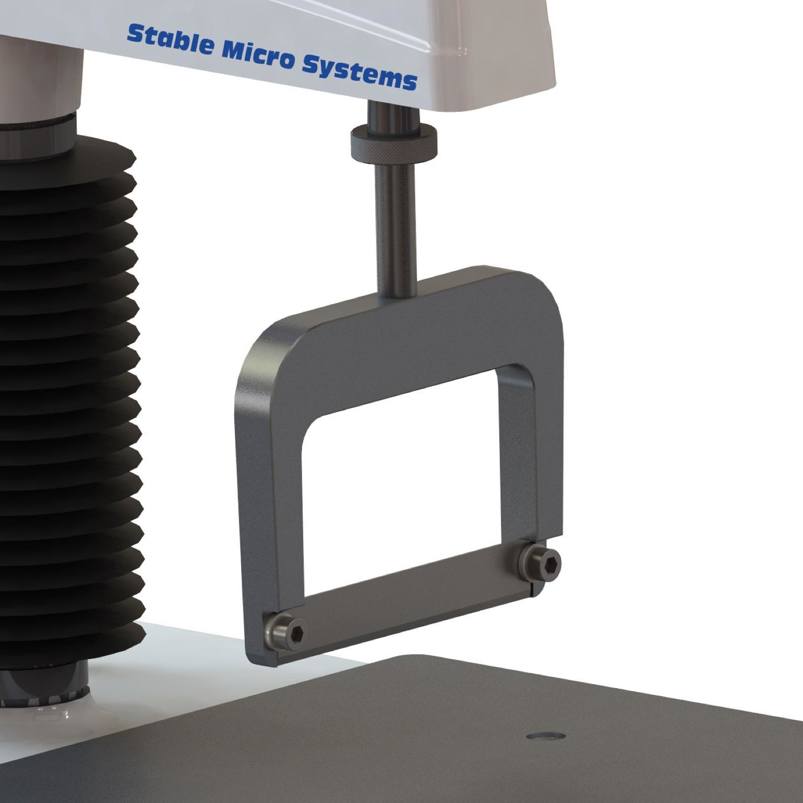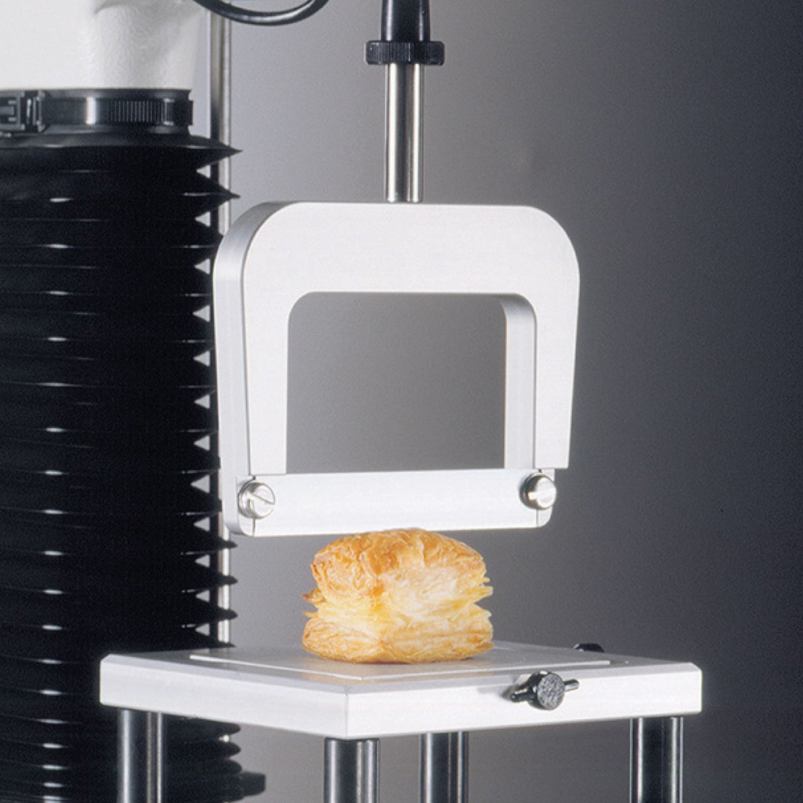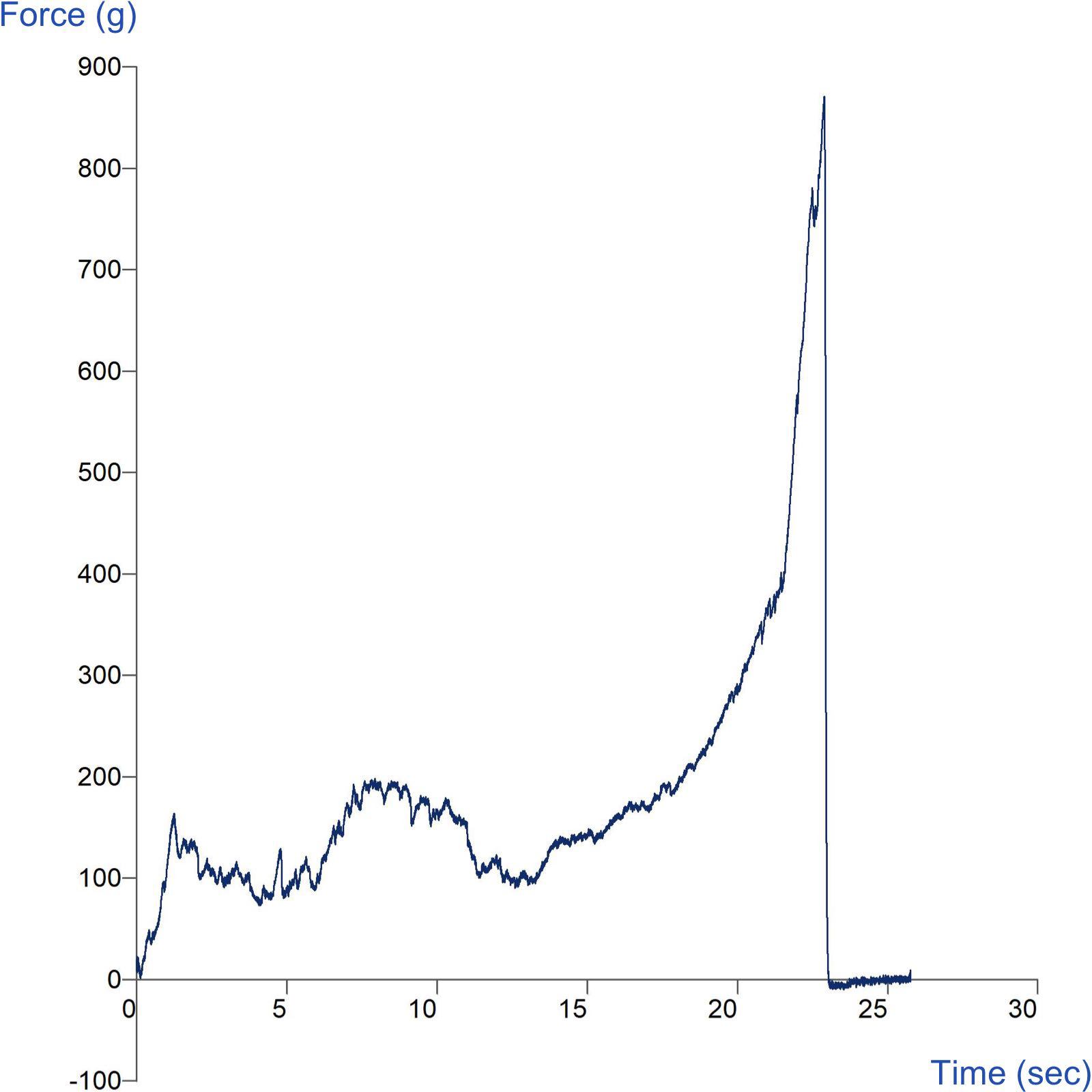Product overview
This craft knife was introduced due to the popularity of the standard craft knife and the necessity to use a thin disposable craft blade for the cutting of deeper and wider samples than could previously be accommodated. Samples of up to 100mm wide can be tested.
A typical example is that of a multi-layered structure such as puff pastry. Pastries with light, flaky appearances are the result of laminating, where a layer of shortening is extruded between two dough sheets. The band is then repeatedly folded and passed through sheeting rollers until the finished degree of flakiness is achieved. With increasing lamination and the resulting changes in the microstructure, the pastries also change their eating characteristics from slightly brittle to tender-flaky and then to firm and biscuit-like. This change is reflected in the change of load which is required to shear through the pastries.
A cutting test using an Extended Craft Knife imitates the consumer’s initial biting step and can be used to assess different structures and eating qualities, from tender flaky to dense and hard. A graph showing numerous peaks and troughs reflects the shearing or breaking of groups of pastry layers (lamellae) whilst the force to shear indicates firmness/tenderness.
This attachment accommodates a replaceable 0.9mm thickness blade supported on a 115mm wide frame.
Note: Protective goggles or other eye protection are recommended when using this attachment.
How does the Extended Craft Knife work?
Ideal sample form
Samples which are solid and self-supporting. Small, hard pieces, brittle products or where a difference in structure of the product is able to be measured.
Benefits and limitations
- The blade thickness (0.9mm) enables precision cutting of very small samples e.g. seeds, nuts or shearing without compression of very soft or brittle samples.
- These sharp blades also enable the cutting of very hard items e.g. confectionery, industrial products.
- This blade is the 'disposable' option if blade blunting is a concern.
- More stroke than standard craft knife for larger (wider and taller) samples – up to 50mm high.
- Sample height should be less than 75mm.
Optional extras
Additional blades (in sets of 10) can be supplied – A/ECB-BL
Technical information
Installation
Full installation instructions are provided within the Education Zone of the latest Exponent/Connect software version and on the technical information sheet accompanying this product.
Chemical compatibility
Stable Micro Systems probes and attachments are commonly made from four materials: anodised aluminium (AA6082 T6), stainless steel (316 T), Delrin (acetyl copolymer) and Perspex (polycarbonate).
In general use, probes and attachments made from these materials will be suitable for testing food products and inert non-food materials.
The four materials listed above are not universally resistant to all types of chemicals and as such the compatibility of the probe/attachment material with the product (to be tested) must be established to prevent damage to the probes and attachments. If the compatibility of the product with the probe is unknown to the customer then the chemical information about the product (Material Safety Data Sheet or Product Data Sheet) should be submitted to Stable Micro Systems. Stable Micro Systems will then assess the suitability of the probe/attachment material for use with the product and advise accordingly. If this advice is not sought then Stable Micro Systems will not accept liability for probes/attachments damaged by chemical attack from the product being tested.
Cleaning and maintenance
All probes and attachments may be cleaned in warm (or hand hot) water using a mild detergent. A soft brush may be used but abrasive cleaning aids should be avoided. Stable Micro Systems products should not be microwaved or cleaned in a dishwasher.
Screw threads should be lightly lubricated after drying using a light lubricant, e.g. petroleum jelly, mineral oil. This will aid the fitting and unscrewing of the item. Each component of a probe or attachment should be wrapped separately when stored, to avoid scratching or chipping. This will safeguard against any unnecessary damage to the accessory.



